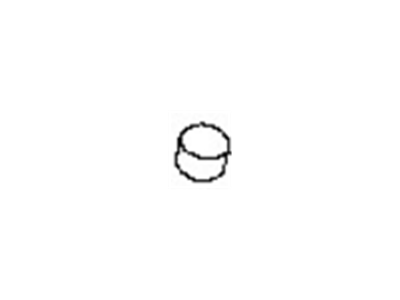Disconnect the cable from the negative terminal of the battery. If working on a 1.8L engine, drain the engine coolant. Remove the intake manifold and valve cover. Check the valve clearances and record the measurements; if any valves are out of specification, they can be corrected before reinstalling the camshafts. Loosen the right front wheel lug nuts, raise the vehicle, and support it securely on jack stands before removing the right front wheel. Remove the inner fender splash shield. Position the engine at TDC on the compression stroke for number one cylinder, marking the links of the timing chain that correspond to the timing marks on the camshaft sprockets. Caution: Do not turn the camshaft(s) or crankshaft after marking, as this could cause valve contact with the pistons. Remove the timing chain cover and timing chains. For 1.6L engines, remove the exhaust camshaft sprocket first by holding the hexagon part of the camshaft with a wrench, then remove the sprocket bolt and the sprocket itself. Rotate the intake camshaft sprocket to the most advanced point, loosen the three front camshaft cap mounting bolts, and remove the cap. Locate the No.1 oil hole for the camshaft and apply at least 44 psi of air pressure to the oil hole while rotating the camshaft sprocket counterclockwise until the stopper pin hole becomes visible. Insert a 0.098 inch (2.5 mm) thick Allen wrench through the notch and into the stopper pin hole to secure the camshaft sprocket in the most advanced position. Hold the hexagon part of the camshaft with a wrench and remove the camshaft sprocket center bolt, then remove the sprocket. For 1.8L engines, mark the relationship of the sprocket to the camshaft front bearing cap, hold the hexagon part of the camshaft with a wrench, and remove the camshaft sprocket bolt before removing the sprocket. Before removing the camshafts, use a dial indicator to check camshaft endplay. Loosen the camshaft bearing caps in reverse order of tightening, keeping the caps in order for reinstallation. Remove the bearing caps or bridge and lift the camshafts straight up and out, then pull the Lash Adjusters straight up and store them in numbered plastic bags or a marked box. Visually examine the camshaft lobes, journals, bearing caps, and Lash Adjusters for any signs of wear or damage. Measure camshaft journal diameter and lobe height with a micrometer, and check the oil clearance for each camshaft journal using Plastigage. Clean the bearing caps and camshaft journals before laying the camshafts in place without lubrication, then install the bearing caps and tighten the bolts in sequence. Do not turn the camshaft while the Plastigage is in place. After checking the clearance, scrape off the Plastigage carefully. Apply moly-based engine assembly lubricant to the camshaft lobes and journals, then install the camshafts in their original positions at TDC, ensuring both camshaft dowel pins face the 12 o'clock position. For 1.6L engines, apply a 1/8-inch bead of RTV sealant to the timing chain cover mating surface, install the bearing caps and bolts, and tighten them in sequence. For 1.8L engines, apply a 1/8-inch bead of RTV sealer to the camshaft bridge sealing surface, install the bearing cap bridge and bolts, and tighten them in sequence. Install the camshaft sprockets and timing chain, aligning the marks on the timing chain with the timing marks on the camshaft sprockets. The remainder of the installation is the reverse of removal, and if any part of the valve train was replaced, check and adjust the valve clearance. Finally, reconnect the battery and perform the necessary re-learn procedures.
Posted by NissanPartsDeal Specialist 












